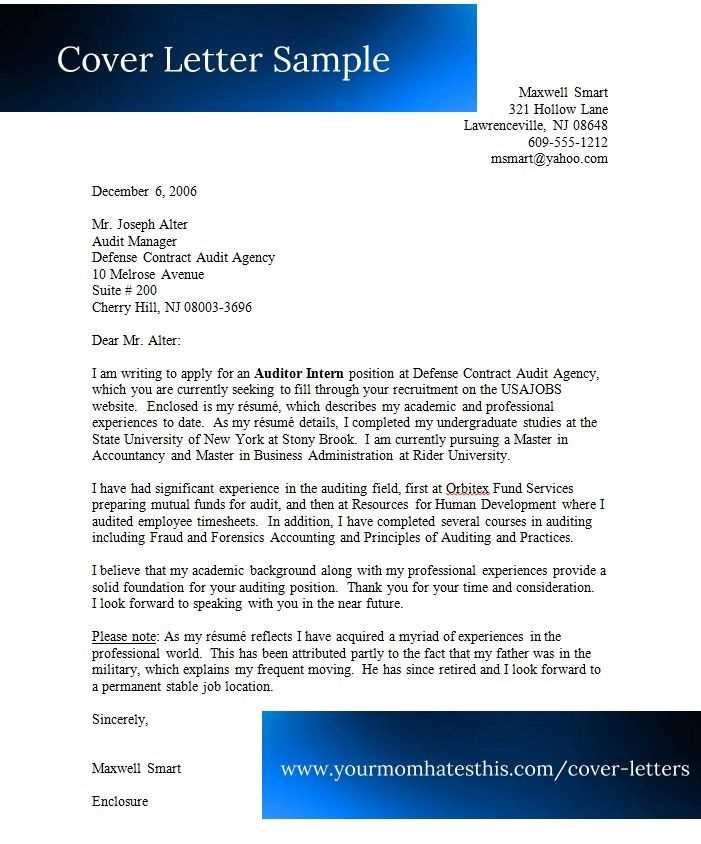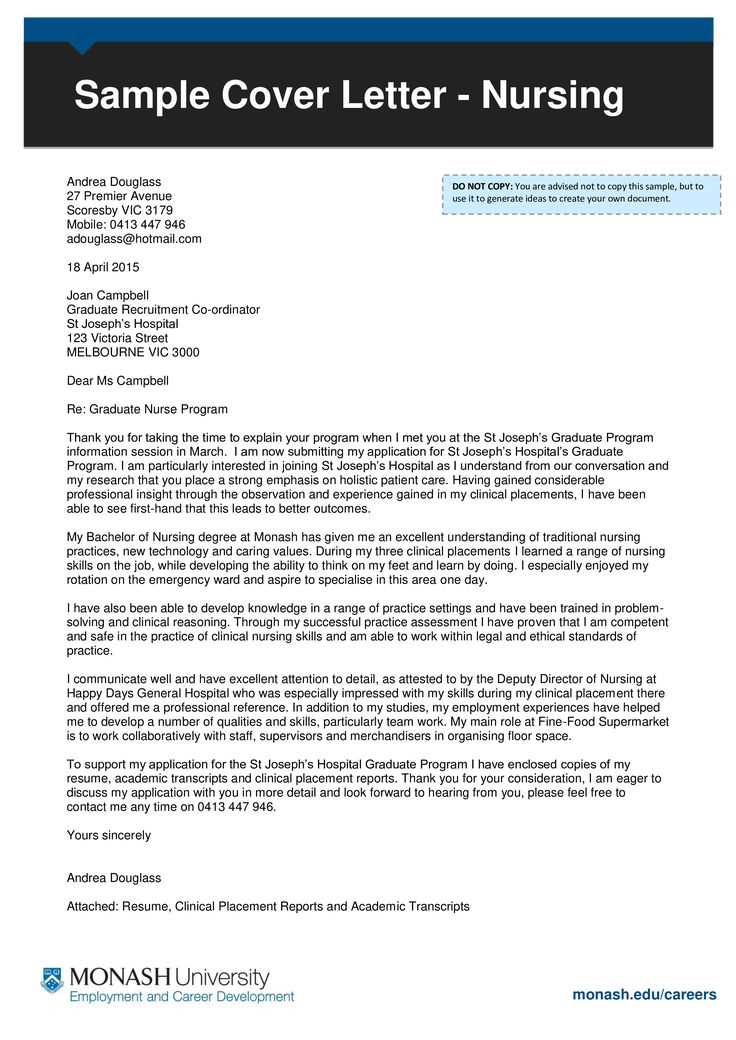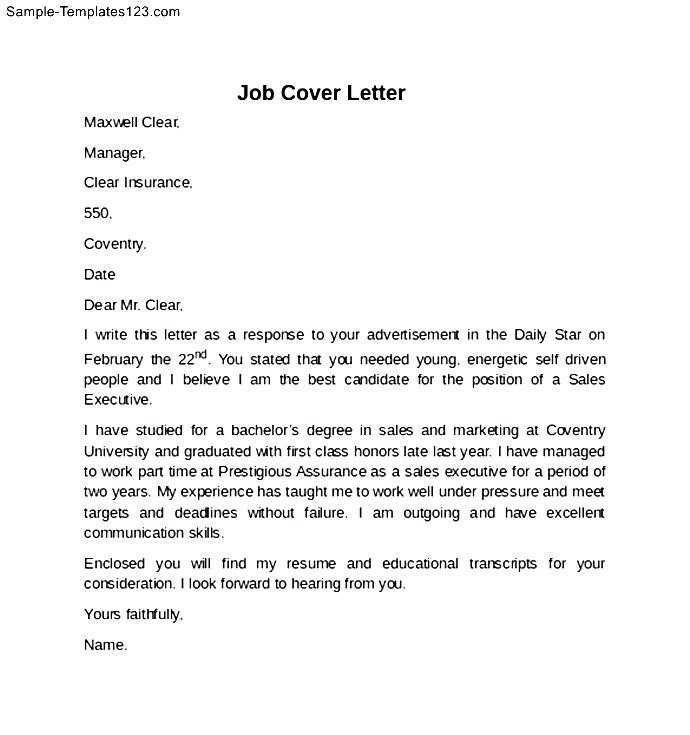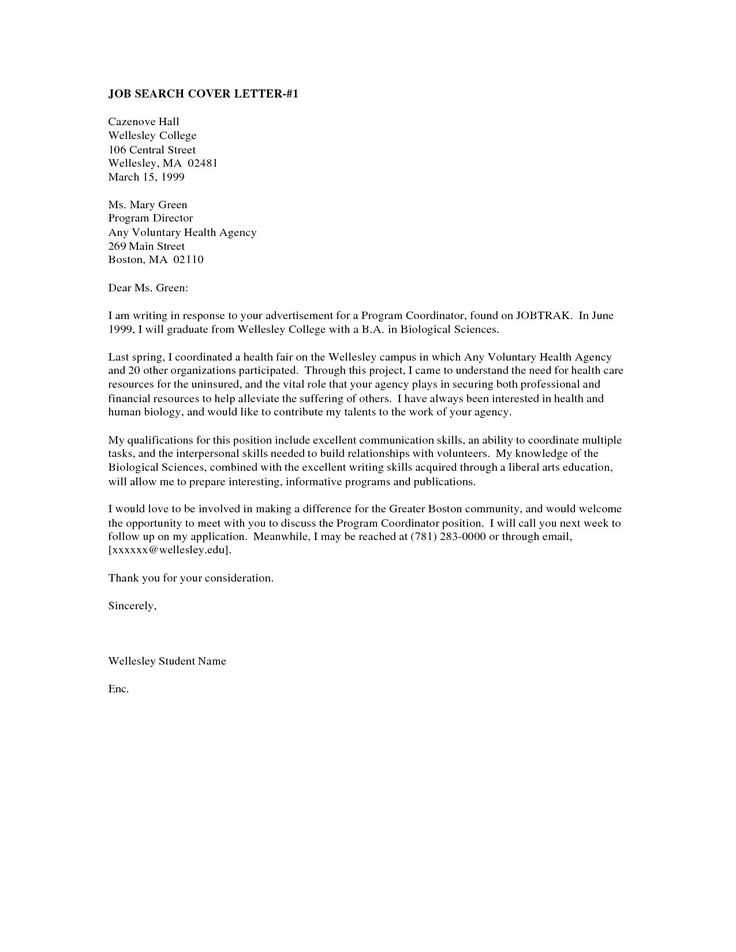New job cover letter template

Write a clear and direct cover letter that aligns with the job you’re applying for. Highlight your skills and experiences that match the job description, showing why you’re the right fit. Be specific about how your background meets the company’s needs, rather than using vague phrases.
Focus on the job’s key requirements. Address each skill or experience mentioned in the job posting. If you lack certain qualifications, emphasize your willingness to learn or other related strengths that would make you an asset to the team.
Use a friendly yet professional tone throughout your letter. While you should be formal, make sure your personality shines through. Employers appreciate authenticity, so don’t be afraid to let your enthusiasm for the role show.
End your letter with a strong closing that invites the hiring manager to contact you for further discussion. Keep it concise but confident. A brief thank you for their time and consideration adds a nice touch.
New Job Cover Letter Template

Begin by addressing the hiring manager directly. Use their name if possible to make the letter personal and engaging.
Clearly express your interest in the position and highlight your enthusiasm for the company. Mention why you’re excited about the opportunity and how your skills align with the job requirements.
Key Qualifications and Experience
Focus on specific skills and experiences that demonstrate your suitability for the role. Provide concrete examples of your accomplishments that directly relate to the job description.
Closing Statement
End with a strong call to action, inviting the reader to contact you for further discussion. Reaffirm your interest in the role and express your eagerness to contribute to the team.
Highlighting Key Skills and Experience
Focus on specific skills that directly match the job description. Tailor your cover letter by selecting those abilities that show you’re ready for the role from day one.
1. Technical Expertise
- Showcase industry-specific tools or software you excel in, such as project management systems, data analysis platforms, or design software.
- Mention certifications or training that prove you’re up-to-date with current technologies.
2. Problem Solving & Results
- Highlight examples where you identified a problem and delivered a solution, detailing the outcome.
- Include metrics or results to back up your claims, such as reducing costs, improving efficiency, or increasing team productivity.
By aligning your abilities with the job’s needs and providing concrete examples, you’ll give the employer a clear picture of what you bring to the table.
Tailoring the Letter to the Job

Focus on the specific requirements listed in the job description. Reflect on your skills and experiences that align directly with the employer’s needs. Mention how your background matches their expectations, highlighting key accomplishments that demonstrate your qualifications. Avoid using generic phrases, and instead, show how you can contribute to the company’s goals.
Highlight Relevant Skills

Incorporate skills that are essential for the position. Instead of a generic skills list, provide concrete examples where you’ve successfully applied them in past roles. This will not only make your letter stand out but also show that you understand the role’s demands.
Use the Company’s Language
Pay attention to the language used by the company in the job posting and mirror it in your letter. This includes terminology related to the job, as well as the company’s mission or values. Using similar language shows that you are in tune with their culture and understand the role in depth.
Demonstrating Knowledge of the Company
Show your understanding of the company by referencing recent projects, initiatives, or goals they are working towards. This proves you’ve done your research and aligns your skills with their needs.
- Refer to the company’s recent product launches, highlighting your knowledge of their market positioning and how you can contribute.
- Discuss any company values or culture that resonate with your own professional philosophy and explain why you are a good fit.
- Mention industry trends they are involved in and suggest how you could help them stay ahead of competitors or seize new opportunities.
Tailor your cover letter to reflect the company’s goals, whether it’s expanding into new markets or enhancing internal processes. Connect your expertise directly to their objectives to demonstrate your potential impact.
- Reference specific goals or challenges listed in their job postings and explain how your experience can help overcome these.
- Show your enthusiasm for the company’s mission and explain why you are excited about the opportunity to contribute.
Closing the Letter with a Strong Call to Action
Encourage the reader to take the next step by clearly stating your intention. Use a direct and confident tone that prompts action. For example, suggest scheduling a call or meeting to discuss further details. Avoid vague requests that could leave the reader uncertain.
Be specific about what you want from the reader. If you’re requesting an interview, indicate your availability or propose a time frame for follow-up. Make sure your call to action feels natural within the context of your message.
End with a sentence that expresses enthusiasm and readiness to engage further. For instance: “I look forward to discussing how my skills align with the role in more detail.” Keep it professional yet warm, demonstrating your eagerness to contribute.
| Positive Phrases | Effective Outcomes |
|---|---|
| “I would be happy to discuss how my skills fit the role.” | Shows readiness to engage in a discussion |
| “Let’s schedule a meeting to explore how I can contribute.” | Encourages immediate action |
| “Looking forward to connecting and sharing my vision for the position.” | Expresses enthusiasm and forward-thinking |
Finish by thanking the reader for their time, leaving the door open for further communication. A simple “Thank you for considering my application. I look forward to hearing from you soon” works well. End with a polite sign-off, such as “Sincerely” or “Best regards.”
Proofreading and Final Adjustments
Before submitting your cover letter, carefully review it for spelling, grammar, and punctuation errors. Pay close attention to small mistakes that might have been overlooked, like missing commas or typos. Read the letter aloud to ensure it flows naturally and the sentences are clear.
Check that all the information is accurate, including the company name and the position title. Make sure your contact details are correctly listed and formatted. Ensure your letter matches the tone and style of the job you’re applying for–too formal or too casual can create the wrong impression.
Reevaluate your opening and closing sentences. They should be strong and engaging, leaving a lasting impression. Ensure your cover letter aligns with your resume and does not repeat the same points verbatim. You want it to complement your resume, not repeat it.
Finally, ask someone else to read through it. A fresh set of eyes might spot issues you missed. This step can make a big difference in making sure your cover letter is polished and professional.